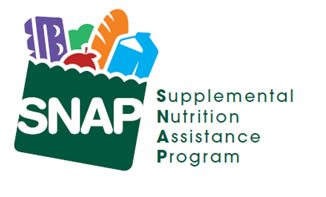 Michael Tanner of the Cato Institute released a recent policy analysis that raises important questions about whether or not we should completely re-conceptualize how to provide food for the truly disadvantaged. In “SNAP Failure: The Food Stamp Program Needs Reform” Tanner argues The Supplemental Nutrition Assistance Program (SNAP) is currently crippled by high administrative costs, significant fraud and abuse, and weakening of standards. Tanner notes that SNAP breeds greater dependence on government, and, even worse, seems to have negligible long-term effectiveness in eliminating food deficiencies for the truly disadvantaged.
Michael Tanner of the Cato Institute released a recent policy analysis that raises important questions about whether or not we should completely re-conceptualize how to provide food for the truly disadvantaged. In “SNAP Failure: The Food Stamp Program Needs Reform” Tanner argues The Supplemental Nutrition Assistance Program (SNAP) is currently crippled by high administrative costs, significant fraud and abuse, and weakening of standards. Tanner notes that SNAP breeds greater dependence on government, and, even worse, seems to have negligible long-term effectiveness in eliminating food deficiencies for the truly disadvantaged.
The statistics are overwhelming. Using primarily government data, Tanner observes that the poverty is politicized in Congress through the framing of food stamps as fulfilling two separate goals—“improved levels of nutrition” and “strengthening the agricultural economy.” This created the “bipartisan” support that has exploded funding and served the interests of both political parties. Everybody wins, except for the poor. According to Tanner, “Since 2000, spending on SNAP increased from just $17 billion per year to more than $78 billion in 2012, a greater than fourfold increase.” The increase in spending cannot even be blamed on the recession. According to Congressional Budget Office (CBO) estimates, 35 percent of the program’s growth from 2007 to 2011 was not a result of economic factors in the country.
The factors that have created the expansion include:
(1) Relaxed Eligibility–the qualifications to receive food stamps are increasingly more relaxed so qualifiers include those who are not truly disadvantaged. Nearly 17 percent of SNAP households have incomes above the poverty line.
(2) Increased Participation from Outreach–the incentive structure from the federal government rewards states for increasing their SNAP rolls. Tanner notes,
Federal and state governments now spend more than $41.3 million annually on advertising and outreach for food stamps, a sixfold increase since 2000. Some states have even hired so-called food stamp recruiters with monthly quotas of recipients to sign. example, Florida SNAP recruiters have a quota of 150 new participants per month, which may help account for that state’s tremendous growth in food stamp receipt.
With perverse incentives like this it is no wonder the number of recipients is rapidly increasing.
(3) Increased Benefits—the amount of cash and in-kind benefits continues to increase and inadvertently encourages participants to find ways to bundle the benefits with other welfare programs—including reclassifying expenditures to demonstrate increased need.
Is the current system achieving good results? Not really. While SNAP does keep the worst-off from starving, the Government Accounting Office reports that there is no evidence to suggest that SNAP is at all effective at alleviating hunger and malnutrition for low-income households. To make matters worse, the program fosters a culture of dependency. Almost 56 percent of SNAP program recipients are on the program for 5 years or more. The program also removes the incentives to seek employment, especially when the program is bundled with any of the other 21 different food assistance welfare programs.
Tanners rightly wonders if low-income families are better off with SNAP than they would be if they were in a system of flourishing local private charities. That is a wonderful question that needs further exploring. Tanner believes that the current data suggests needed changes in the program, such as giving states the right incentives to target the benefits to the truly needy, raising eligibility requirements, ending the bundling of SNAP with other welfare programs, strengthening the link between receiving benefits and meeting work requirements, and giving states block grants so that they are free to structure the program for their particular needs.
The one-size-fits-all approach over the past 50 years or so isn’t really helping those who need it. Simply pouring more money into a deeply flawed system for the sake of political gain is unconscionable. If we want to help people on the margins in ways that are both efficient and effective we are going to have to do this differently in the future.

